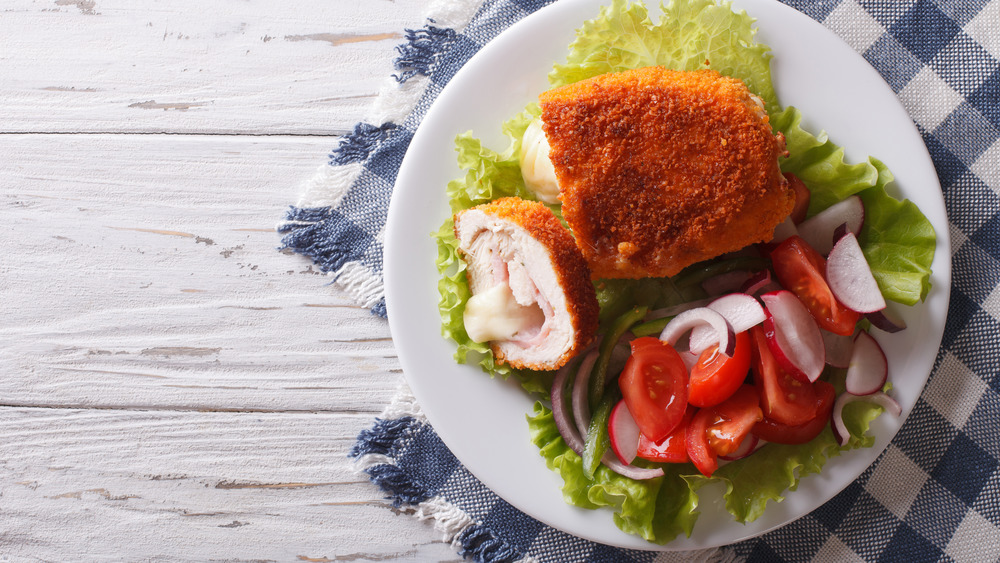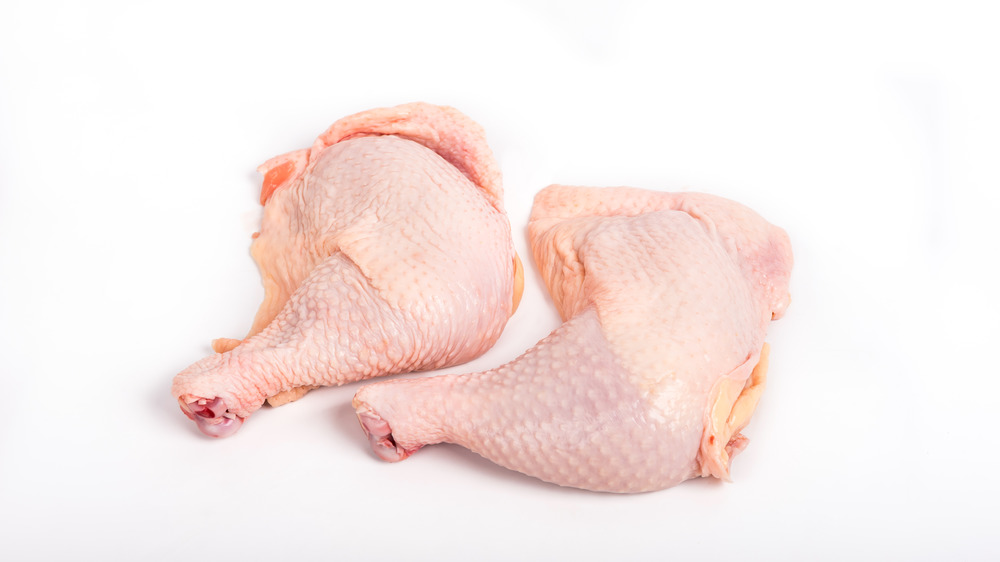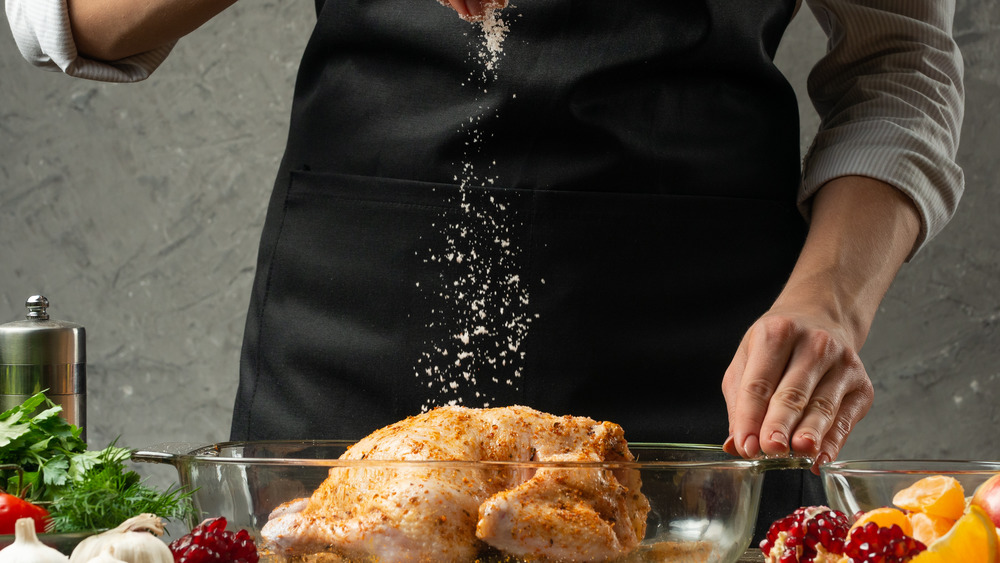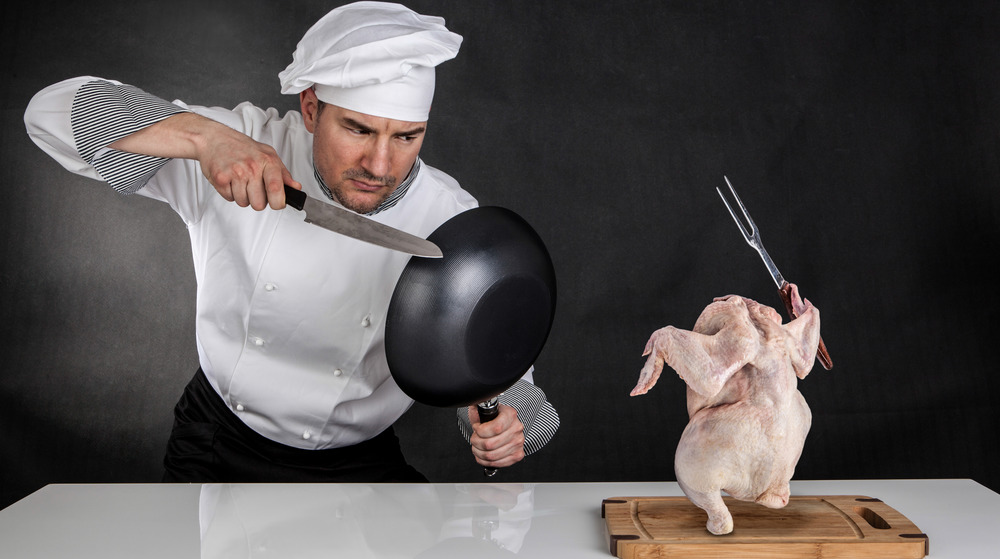Why You Should Think Twice Before Ordering Chicken At A Restaurant
Where would we be without chicken? It's cheap, it's low in calories, it's a terrific source of lean protein, and it can be prepared about a million different ways, all of them equally tasty (although many of the tastiest, sadly, add in all of the fat, carbs, and calories that chicken alone lacks). Just about the only way you can't eat this fabulous fowl is in chicken sushi or as chicken tartare since consuming raw or even undercooked chicken could make you very ill.
If you're going out to eat, you may well be inclined to order chicken as it's one of the more budget-friendly options available as well as being reliably tasty. Well, we hate to burst your bubble, but nutritionist Toby Amidor, MS, RD, CDN, FAND, the author of the best-selling The Best 3-Ingredient Cookbook, warns that the chicken served by restaurants raises some concerns about food safety and may pose the threat of food-borne illnesses such as salmonella.
Chicken needs a proper reception
As Amidor points out, "There are many steps throughout the flow-of-food in a restaurant that chicken needs to be kept safe." Even assuming that the chicken has been safely processed and transported in an adequately refrigerated truck with no delay, she says that upon arrival it should be inspected to determine that it's no warmer than 41 degrees and is entirely odor-free. (Any smell at all would be a very bad sign and indicate that it should be tossed.) Amidor says that in a restaurant that's following proper safety procedure, once a shipment of chicken is received it should also undergo a visual check for discoloration — she says that dark wing tips aren't good, but red ones are ok — and prodded to make sure that the chicken flesh will spring back when it is touched.
Once the chicken passes such an inspection, Amidor tells us it will immediately need to be refrigerated at a temperature of 41 degrees or below and should also be placed on a lower shelf in order "to avoid cross-contamination from other foods in there." If it's necessary to freeze the chicken, assuming this isn't one of those restaurants claiming that their food is "always fresh, never frozen," Amidor says it should go into the freezer "immediately after receiving." If any of these steps aren't followed, as might be the case in a super-busy restaurant kitchen, then there could be trouble ahead.
Safe chicken prep may be neglected
Once it's time to cook the chicken, Amidor insists it be "kept no longer than four hours at room temperature." She also says it's not permitted for restaurants to take the shortcut of defrosting chicken on the countertop. She says the best way to defrost chicken, for restaurants and the rest of us, is to let it sit in the fridge for up to a few days or, for smaller pieces, put it under cool running water. In a pinch, Amidor says the microwave may be used, "though not ideal." If microwaved, though, the defrosted chicken must then be cooked right away.
The reason for all of these guidelines, according to Amidor, is "to minimize the time the chicken spends at room temperature or in restaurants it's known as the Time Temperature Danger Zone." She goes on to explain that the TTDZ refers to "a rule in food safety where you cannot keep potentially hazardous food like chicken at temperatures between 41-135*F for over 4 hours." If a restaurant breaks this rule when preparing poultry, then the health inspectors are likely to cry "fowl!" Even after cooking, chicken's not necessarily out of that danger zone. It will have needed to reach a minimum internal cooking temperature of 165 degrees to destroy any harmful microorganisms — this is why no restaurant will ever ask you if you'd like your chicken medium-rare. Cooked chicken should also be either served or refrigerated ASAP.
Restaurant red flags to look out for
So are we never, ever to order chicken from a restaurant again? We asked Amidor if there was anything we could do to ensure a safer chicken experience, since avoiding it altogether would make a trip to Chick-fil-A kind of a bummer. Waffle fries are great and all, but saying no to that yummy sandwich....no, it's too much for anyone to bear.
Luckily, Amidor had a few tips as to whether we can tell if a restaurant is likely to be following proper poultry protocols. She says a little research may be required, saying: "Some states have grades they give restaurants, while other states will allow consumers to see violations of the restaurant in past inspections." She suggests we review this data before choosing where to dine. If you're hungry and not in the mood for homework, however, she says there are also a few things you can look out for at the restaurant itself. If the front-of-house employees are dressed in clean uniforms and what (if anything) you can see of the kitchen looks clean, too, then you might be okay. As Amidor says, these little details "can just give you a better overall picture of how clean the restaurant is and if they are following food safety protocols." If, on the other hand, it looks like you've just walked into an episode of Kitchen Nightmares, then you'd better get the cluck out of there!



